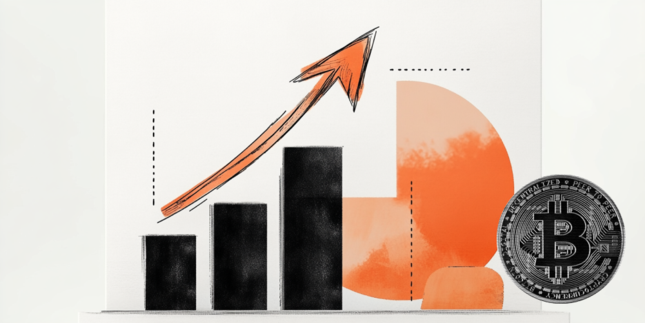The Federal Reserve is doing everything in its power to limit the slide in equities, keep Treasury yields low and provide ongoing liquidity. In a breaking announcement before the start of NY trading, they announced plans to buy $250 billion in mortgage backed securities and $375 billion in Treasuries this week, relaunch their term asset backed securities loan facility to support consumer and business debt and introduce two facilities to support corporate debt markets. They also indicated that there is no limit to their Quantitative Easing program which means they will do whatever it takes and purchase whatever is needed to stabilize the market. Unfortunately their efforts fell flat with stocks giving up early gains to end the day lower once again.
The Fed’s measures were suppose to be positive for stocks and negative for the dollar but stimulus does not solve a health crisis. Once negative coronavirus headlines hit the wires, stocks gave up their gains quickly. The Senate also failed to pass a key procedural vote to advance President Trump’s coronavirus stimulus package. With 5 Republican Senators in quarantine, they simply did not have the 60 votes they needed. While many argue that Trump’s plan favors businesses over average Americans, the reality of the matter is that governments around the world are taking more aggressive monetary and fiscal measures to stabilize stocks. Unfortunately, as the US Surgeon General Dr. Jerome Adams warned today, this week, its going to get bad and not long from now, Americans will realize that self-quarantine will extend beyond April. Adams said “Fifteen days is likely not going to be enough to get us all the way through, but we really need to lean into it now so that we can bend the curve in next 15 days and at that point, we’ll reassess.” Mayors and governors across the nation are saying that schools could remain closed for the rest of the school year. With such a grim outlook, the worst is not over for stocks or currencies.
The greenback which sold off quickly after the Fed’s announcement, ended the day higher against all of the major currencies with the exception of euro. It can be argued that today’s moves was Powell’s way of driving the US dollar lower because intervention is a decision made by Treasury and not the Fed. The US dollar has been on a tear for the past couple of weeks and many governments have talked openly about intervention. It is not clear whether there’s buy in from the Treasury but without US support, any FX intervention efforts will be futile.
Euro in particular should be trading much lower. There are now more coronavirus deaths in Italy than China and the number is growing by double digits. Spain is in the same boat with France and Germany worried that they will be the next to follow. After Chancellor Merkel self-quarantined, she banned any gatherings of more than 2 people. The country’s central bank (Bundesbank) warned that a recession is unavoidable even with the government’s EUR750 billion economic stimulus package. Data from Germany have already taken a turn for the worse with steep declines in IFO and ZEW. Tomorrow’s Eurozone PMI numbers should be ugly and remind investors of how badly COVID-19 affects the economy. EUR/USD should be trading below 1.05 and we believe its only a matter of time before that happens.
On a technical basis, four days of consolidation signals a potential bottom for GBP/USD. However on a fundamental basis, data shows that the UK’s coronavirus outbreak is following a similar trajectory as Italy with a 2 week delay so tougher distancing rules are inevitable. UK PMI numbers are due for release on Tuesday and like the Eurozone, softer numbers are expected but the slide may not be as steep. The commodity currencies remained under pressure despite new fiscal stimulus measures from Australia and a bond buying program from New Zealand. The Canadian dollar performed the worst which is no surprise considering the economic pressure from lower oil prices and COVID-19.
Past performance is not indicative of future results. Trading forex carries a high level of risk, and may not be suitable for all investors. The high degree of leverage can work against you as well as for you. Before deciding to trade any such leveraged products you should carefully consider your investment objectives, level of experience, and risk appetite. The possibility exists that you could sustain a loss of some or all of your initial investment and therefore you should not invest money that you cannot afford to lose. You should be aware of all the risks associated with trading on margin, and seek advice from an independent financial advisor if you have any doubts.
Recommended Content
Editors’ Picks

Gold retains solid gains after reaching fresh record highs Premium
Gold price hit yet another record high on Monday, as the US Dollar sell-off continued on the back of US President Donald Trump’s criticism of Federal Reserve Chair Jerome Powell, fueling concerns about the future of the US economy.

AUD/USD eases from fresh 2025 highs, holds above 0.6400 Premium
The Australian Dollar surged against its American rival to a fresh yearly high of 0.6437. The poor performance of Wall Street pushed AUD/USD lower ahead of the daily close, but broad USD weakness is likely to keep Aussie on the winning side.

EUR/USD hovers above 1.1500 as investors drop the USD
The EUR/USD pair traded as high as 1.1574 on Monday, retreating from the over three-year high as fears cooled in the American session. Still, Wall Street edged sharply lower amid concerns about the Federal Reserve's autonomy.

Bitcoin traders celebrate 3.125 BTC halving anniversary with $90K price prediction
Bitcoin price surges past $88,000 on Monday as traders mark the 3.125 BTC halving anniversary amid a rapid shift in investor focus away from USD-based investments.

Five fundamentals for the week: Traders confront the trade war, important surveys, key Fed speech Premium
Will the US strike a trade deal with Japan? That would be positive progress. However, recent developments are not that positive, and there's only one certainty: headlines will dominate markets. Fresh US economic data is also of interest.

The Best brokers to trade EUR/USD
SPONSORED Discover the top brokers for trading EUR/USD in 2025. Our list features brokers with competitive spreads, fast execution, and powerful platforms. Whether you're a beginner or an expert, find the right partner to navigate the dynamic Forex market.